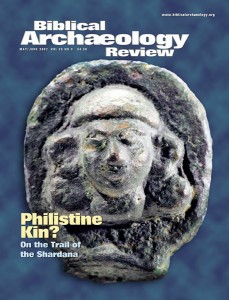
More than half a century ago, the dean of Biblical archaeologists, William Foxwell Albright, pronounced final judgment on the archaeological record for the territory of Judah between the destruction of Jerusalem by Babylon’s king Nebuchadrezzar [Nebuchadnezzar in the Bible] in 586 B.C.E. and the subsequent fall of Babylon to the Persians in 539 B.C.E. “All, or virtually all, of the fortified towns in Judah had been razed to the ground,” he wrote. “There is not a single known case where a town of Judah was continuously occupied through the exilic period [the Babylonian exile].”1
We can hardly avoid a sense of déjà vu on reading Ephraim Stern’s version of the same thesis in “The Babylonian Gap,” BAR 26:06: The Babylonians devastated the country and much of the surrounding region, he argues. All Judahite cities were left in ruins. Following the destruction, there was no resettlement and no continuity of occupation. As a result, the territory of Judah was largely depopulated. Hence the title of his article: “The Babylonian Gap.”
Already a library member? Log in here.
Institution user? Log in with your IP address.

